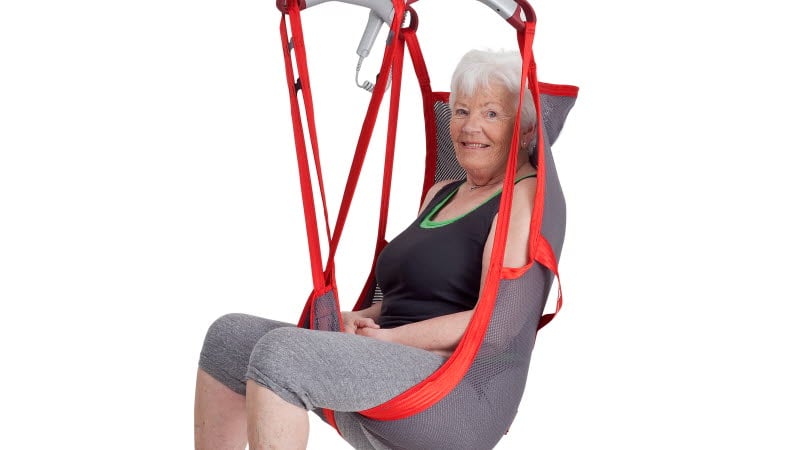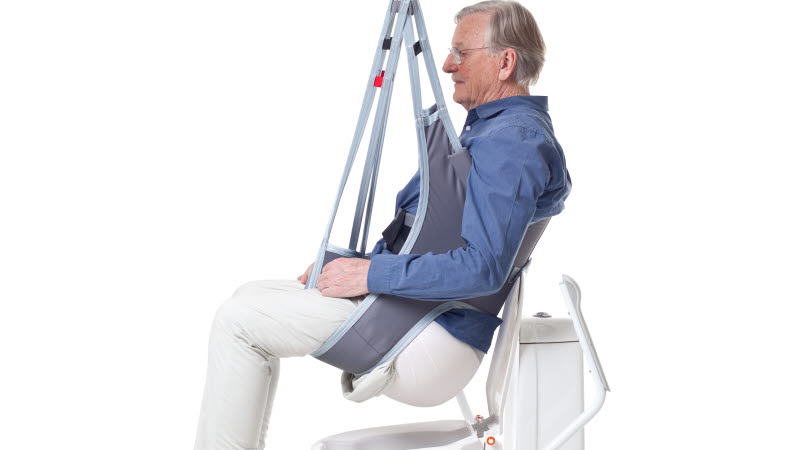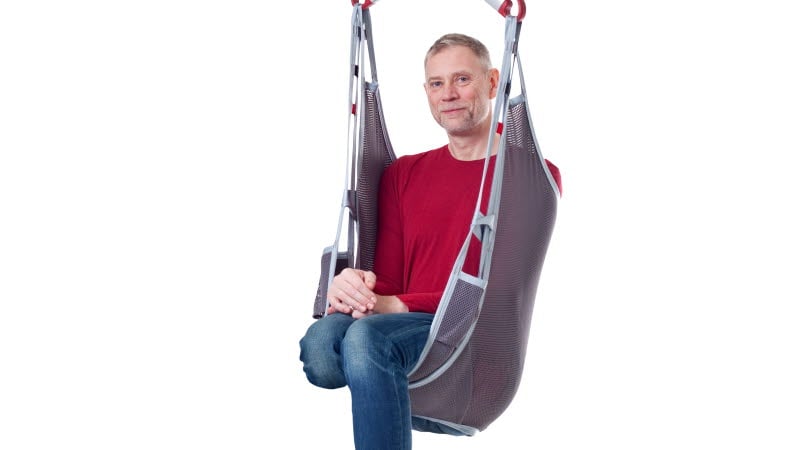Choosing sling for seated transfers
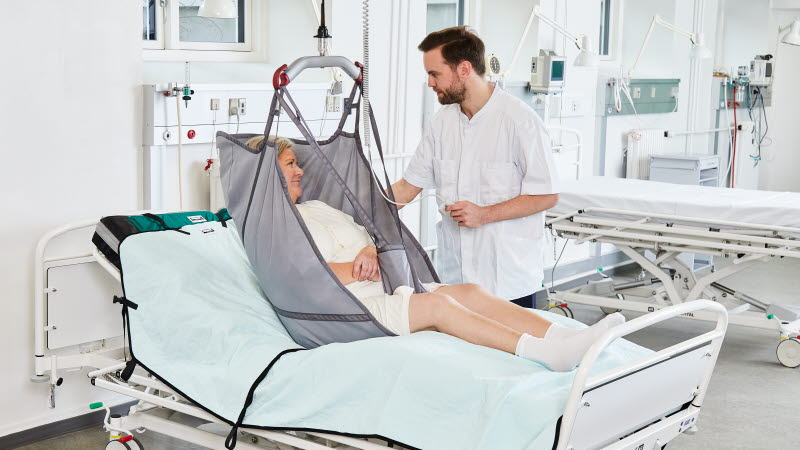
Welcome to our guide on choosing the best patient sling for seated transfers.
We understand that finding the right sling can make a big difference in comfort and safety. Whether you're a caregiver or a healthcare professional, we're here to help you make the best choice that meets the specific needs of each user and transfer situation.
Back height and leg support
When selecting a sling variant, match the sling's back height to the user's torso and head control capabilities to ensure optimal support.
Also, which the type of leg support should be considered based on the lifting situation and the user's physical condition.

Back height of sling
- A HighBack sling supports both head and torso and is suitable for users low torso- and head control.
- A MediumBack sling is without head support but with complete support of the torso. These slings are to be used for users with full head control but low torso control.
- A LowBack sling supports only the pelvis and waist of the user and is therefore only suitable for users with full torso- and head control.

Width of leg support openings
- A standard leg support opening is the most common type of sling since it is suitable for most users and lifting situations.
- A narrow leg support opening is a safe choice for a person with e.g. leg amputee(s), low muscle tone or a very "petit" body because we reduce the hole under the buttock when choosing a narrow opening instead of a standard opening.
- A wide leg support opening allows easy access for toileting, but it is only for users who are able to accommodate the physical demands of a larger hole under the buttock than the standard opening provides.
Considerations regarding type of sling for seated transfer
Each answer brings you closer to the right sling choice.

- Does the user lack or have reduced head stability?
Yes - Make sure to use a sling with high back support. - Does the user lack or have reduced trunk stability?
Yes - Make sure to choose a sling with at least medium back support.
Do NOT use a sling with a wide leg opening, such as toilet and hygiene sling. - Does the user have an above-the-knee amputation?
Yes - Use a sling with a narrow leg opening, such as an amputee sling. - Is the user supposed to remain seated on the sling, e.g., in a wheelchair?
Yes - Use a sling in a suitable material (ex., net) without split leg-opening, such as a Comfort or Shadow sling.

- Is it likely that the sling will get wet, e.g., if used for bathing?
Yes - Consider using a sling in net material that dries more quickly. - Is there a need to facilitate undressing when the user is hoisted
e.g., for toileting?
Yes - Use a sling with a wide leg opening, like a toilet sling. As long as you make sure the user has trunk stability. - Does the user weigh more than 350 kg/770 lbs?
Yes - Ensure the sling has a high enough Safe Working Load (SWL).
Sling selector guide - Seated transfers

Consider the following options:

Low back slings
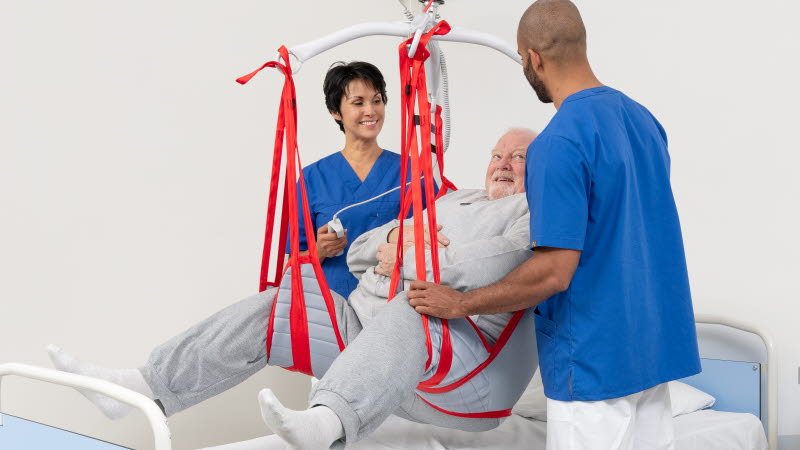
Bariatric slings

Brochure with size guide
In addition to this online guide, the brochure contains a size guide.
Identifying the appropriate sling for a specific user must also account for the user’s body shape and measurements. An ill-fitting sling, whether too small or too large, compromises comfort and poses risks such as pain or the user slipping out of the sling.
The size guide helps find the most suitable size. Please bear in mind that each user’s measurements are unique and that an individual risk assessment always needs to be conducted for the specific user, sling and transfer situation.
Sling selector disclaimer
The Etac Sling Selector acts as tool to provide helpful direction in the selection of sling/slings related to the intended use. Results should only be regarded as a principal guideline and does not substitute the need for individual assessments, performed by competent users for each case/patient.


